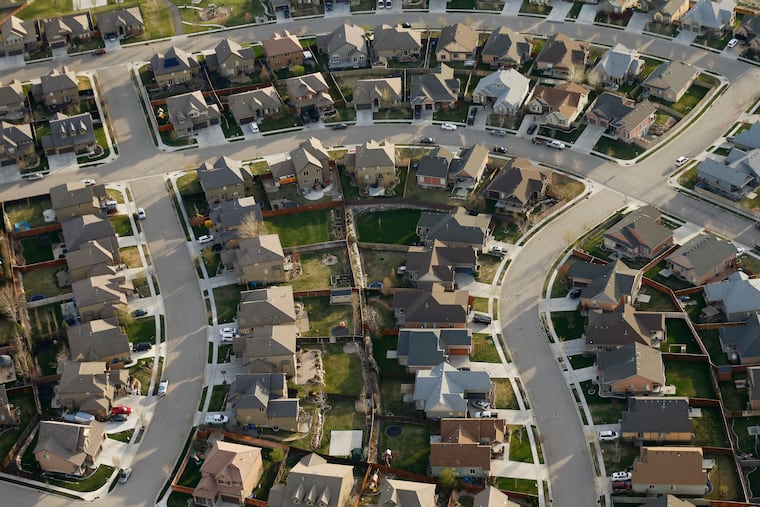The U.S. housing crisis likely will worsen after the pandemic, reports find
Both reports call for government action through traditional measures such as down-payment assistance and a massive increase in homebuilding to address the issue.

NEW YORK — Two studies released Wednesday found that the nation’s housing availability and affordability crisis is expected to worsen significantly following the pandemic, likely widening the housing gap between Black, Latino and white households, as well as putting homeownership out of the reach of lower class Americans.
Both reports call for government action through traditional measures such as down-payment assistance and a massive increase in homebuilding to address the issue.
The reports by Harvard University and the National Association of Realtors come from different perspectives, but ultimately reach the same conclusion: the United States isn't building enough housing to address population growth, causing record low home availability, and rising home prices are putting homeownership out of reach of millions of Americans.
Without substantial changes in homebuilding and home affordability, both reports say, the result will be a more-or-less permanent class of renters contrasted with what will likely be a mostly white class of homeowners. While these problems were known before the coronavirus pandemic, the economic impact of the pandemic exacerbated the problem, the reports say.
“The unprecedented events of 2020 both exposed and amplified the impacts of unequal access to decent, affordable housing," researchers at Joint Center for Housing Studies at Harvard University wrote. "These disparities are likely to persist even as the economy recovers, with many lower-income households slow to regain their financial footing and facing possible eviction or foreclosure.”
» READ MORE: First-time homebuyers are losing out in this twisted housing market | Maria Panaritis
A separate study commissioned by the National Association of Realtors released Wednesday found that the U.S. housing market needs to build at least 5.5 million new units to keep up with demand and keeping home ownership affordable over the next 10 years. That's on top of the roughly 1.2 million units built per year on average, or a roughly 60% increase in home construction for the next decade, just to keep up with demand.
“The scale of underbuilding and the existing demand-supply gap is enormous and will require a major national commitment to build more housing of all types by expanding resources, addressing barriers to new development and making new housing construction an integral part of a national infrastructure strategy,” wrote Kenneth Rosen, David Bank, Max Hall, Scott Reed and Carson Goldman with the Rosen Consulting Group, in its report to NAR.
The National Association of Realtors report points out several geographies that require substantial increases in homebuilding; not surprisingly many parts of California and the West are on the top of the list. NAR also says substantial homebuilding is required in Southern Florida, as well as the Northeast, particularly the New York-New Jersey metropolis region.
Without additional housing, an increasing share of Americans are likely to become renters in the coming years. While renting is not necessarily a bad thing since it provides more flexibility, homeownership has been the primary driver of wealth generation in the U.S. since World War II. Home equity is often a way for Americans to have a financial safety net at times of economic trouble, as seen in the pandemic.
These problems get worse when broken out by racial backgrounds. Black and Latino homeowners have less in savings than their white counterparts. White potential homeowners also have generational wealth to potentially tap in the form of a down payment.
“The diverging circumstances between those with the resources to weather the economic shutdowns and those struggling to simply stay afloat thus widened already large inequalities in income and wealth,” said the Harvard researchers.
Outside of a massive increase in homebuilding, researchers at Harvard pointed to government home affordability programs as likely the best solution to address the problem long term.
“Any of a number of new proposals to provide down payment assistance to socially disadvantaged buyers would potentially bring millions of low-income households and households of color into homeownership.”